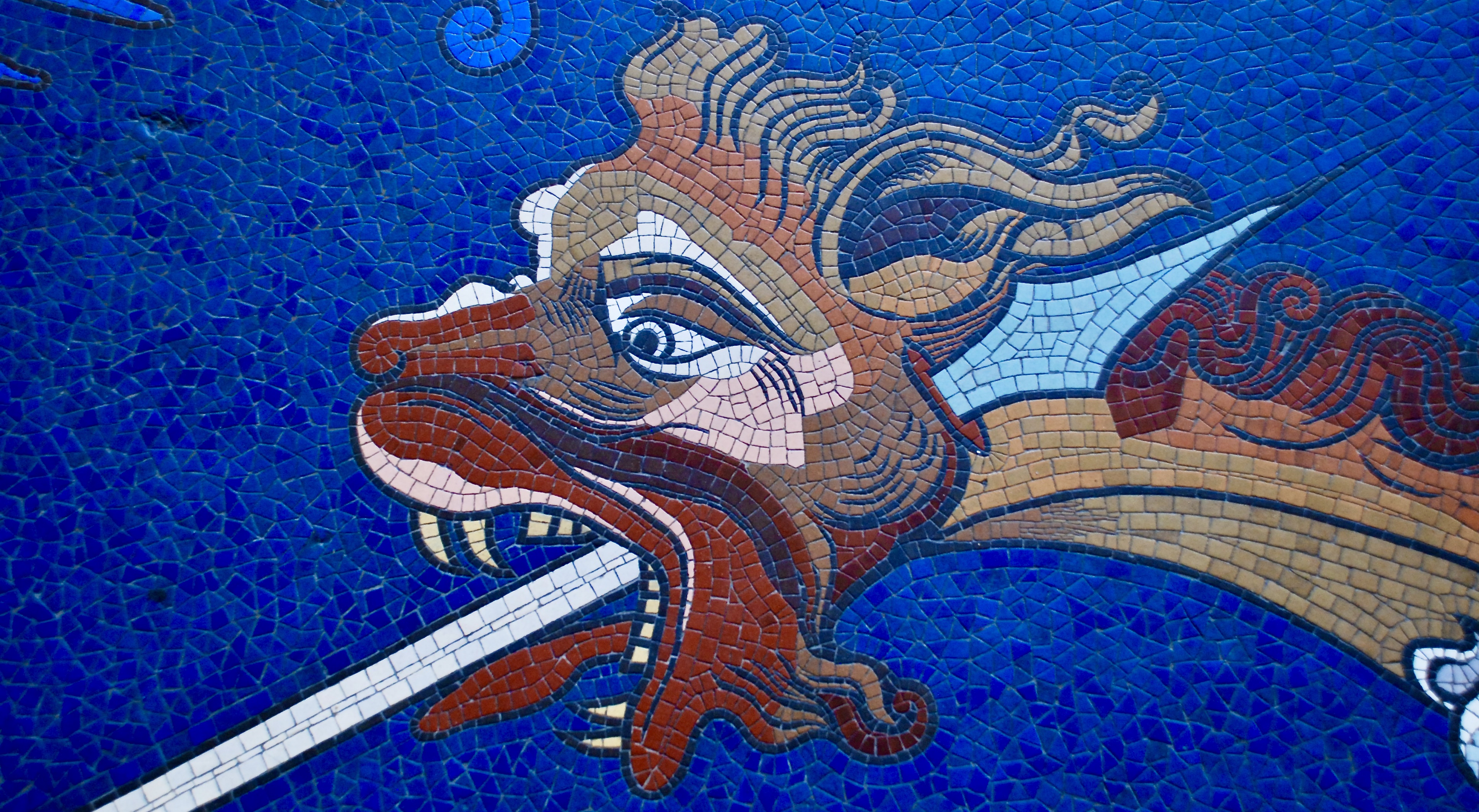Samaban
Few things strike fear more deeply into the heart than see the winged, serpentine shadow of a Samaban looming down on you, whether that be amongst rolling desert sands, or surrounded by dense jungle. These giant, winged snakes are renowned for their wickedly deadly venom and their keen intelligence, which makes them very dangerous to encounter indeed.
Many communities also regard Samaban as semi-divine, such as the Ma’Jalis of the Kaldara desert, who associate the creature heavily with the Desert Serpent god, Zazmaan; or the remote communities of the Yalthar Jungle, who regard Samaban as deities in their own right.
Basic Information
Anatomy
A Samaban’s basic form is that of a snake, with two distinct differences, namely that they grow to enormous sizes, the largest observed Samaban on record was thought to be over 30m (98ft) long; and they also have large, leathery wings that sprout from the midpoint of their spines, which allow them to fly.
Samaban are poisonous creatures, and they have large fangs which can be used to deliver a deadly venomous bite with. They also are capable of spitting large resinous balls of venom at their prey or aggressors, which can not only be fatal in its toxicity, but its adhesive nature makes it incredibly difficult for a targeted creature to free itself.
Genetics and Reproduction
Samaban are largely solitary creatures, but once every ten years they will gather in the skies at a seemingly random point in time, in a seemingly random place to pair off and mate. The temporal and geographical locations clearly have some significance to the Samaban, though no Imperial Zoologist has been able to deduce exactly what this is.
In any case, female Samaban will produce on average a single egg that they will incubate for an entire year, under the protection of her mate until the young Samaban hatches, at which point both parents will leave their offspring to fend for themselves. Though this seems cruel, hatchling Samaban are hard-wired from birth to know how to survive and as long as they can avoid other predators for the first few years of their lives, they will quickly become large enough to disregard them.
Dietary Needs and Habits
Samaban are carnivorous creatures and their large sizes mean that they need a healthy supply of food to keep them well fed. They are predominantly not a threat to humanoids who do not antagonise them, as they rarely hunt smaller creatures unless their need is truly dire, preferring instead to hunt larger herbivorous creatures.
Additional Information
Uses, Products & Exploitation
Though it is rare for a Samaban to be actively hunted and killed by humanoids, deceased and living Samaban are a source of useful materials. Their skin, which is shed periodically, or which can be harvested from dead specimens is naturally very hardy and can be used to produce an incredibly hard leather. Samaban leather is always in demand for the making of boots.
In addition, Samaban venom, primarily that which is spat out at prey or enemies is collected by the peoples of the Yalthar Jungle (whose particularly humid climate means that the venom takes an exceedingly large amount of time to dry out) who turn it into a drug known as Samaban Liquor. This drug is used in small doses as an anaesthetic by medical practitioners, but in stronger doses it is used in shamanic rituals to produce out of body experiences and to commune with the gods.
Average Intelligence
Highly intelligent, the only thing that stops Imperial Zoologists from classing them as a sapient species is the fact that they are not humanoid and have no recognisable ‘culture’, even though they are well capable of learning languages etc.
Perception and Sensory Capabilities
Both varieties of Samaban have keen sight in both light and dark conditions, making them effective hunters at all times of day.
In addition, they are sensitive to vibrations in the landscape around them, and are thought to be able to sense the presence of a prey creature, or intruder in their territory from over a mile away. Forest Samaban have tuned this sense to register movements in the foliage of their jungle homes, whilst Desert Samaban instead sense movement in the endless sea of sand they live in.
Lifespan
Samaban are thought to have a potential lifespan equal to Dragons in its longevity and many are thought to have lived for thousands of years.
Conservation Status
Because of their size, place in the food chain and their nutritional requirements, the population of Samaban, both desert and forest tends to remain small, thought to be only several thousand of both sub-species in existence at any one time, but because of their size, ferocity when attacked and the potency of their venom, they are not thought to be endangered in any way and it is a rare occurrence that one is killed by a humanoid, even the hunters of the Lodge of Imperial Hunters.
Average Length
Most tend to average around 20m (65ft) in length. The largest Samaban ever recorded was measured at just over 30m (98ft).
Body Tint, Colouring and Marking
Forest Samaban tend to have scale colours and markings in greenish hues to match their arboreal lifestyles. It is common for them to carry extra coloured markings, normally yellow, red or blue stripes. Desert Samaban on the other hand have scales of a gold, brown or sand coloured hue, generally with no additional coloured markings. On rare occasions, pure white Samaban have also been observed.
Geographic Distribution



Comments